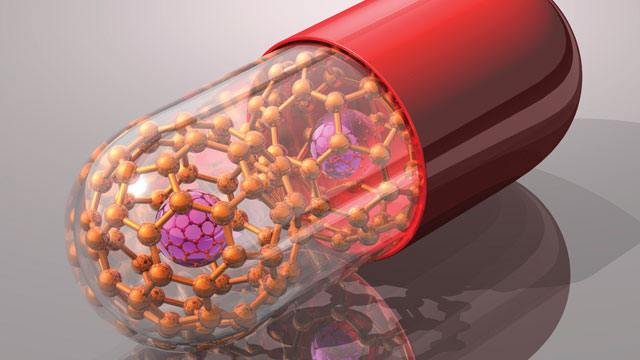Nanomedicine is an emerging field that leverages the unique properties of nanoparticles to revolutionize healthcare. By manipulating matter at the molecular and atomic levels, scientists and medical professionals are developing innovative treatments and diagnostic tools that promise to enhance the efficacy and precision of medical interventions. This article explores the multifaceted applications of nanomedicine, highlighting its advantages and its transformative potential in various medical fields.
The Advantage of Nanoparticles
One significant advantage of nanoparticles is their ability to target specific cells and tissues with high precision. This targeted approach reduces the side effects often associated with conventional treatments like chemotherapy, which can harm healthy cells. For instance, nanoparticles can be engineered to deliver drugs directly to cancer cells, minimizing damage to surrounding healthy tissues and improving the overall effectiveness of the treatment. The precision and control offered by nanoparticles are driving advancements in personalized medicine, where treatments can be tailored to the unique genetic and molecular profile of each patient.
Furthermore, nanoparticles exhibit unique physical and chemical properties that enhance their functionality in medical applications. Their small size allows them to pass through biological barriers that larger particles cannot, such as the blood-brain barrier. This capability is particularly beneficial in treating neurological disorders and brain tumors, where conventional treatments struggle to reach affected areas. Additionally, the high surface area-to-volume ratio of nanoparticles provides more reactive sites for drug attachment, improving the delivery and efficacy of therapeutic agents.
Applications of Nanoparticles in Medicine
The integration of nanoparticles in medicine is already showing promising results in various areas, including drug delivery, imaging, and diagnostics. Nanoparticles can enhance the solubility and stability of drugs, ensuring that they reach their intended targets more effectively. This is especially important for drugs that are poorly soluble in water, as nanoparticles can improve their bioavailability and therapeutic performance.
In drug delivery, nanoparticles can be designed to release their payload in response to specific stimuli, such as pH changes or the presence of certain enzymes. This controlled release mechanism allows for sustained and localized drug delivery, reducing the frequency of dosing and minimizing systemic side effects. For example, in cancer therapy, nanoparticles can be engineered to release chemotherapy drugs only within the acidic environment of tumor cells, sparing healthy tissues from exposure to toxic agents.
Nanoparticles are also making significant strides in the field of medical imaging. They can be used as contrast agents in various imaging techniques, such as magnetic resonance imaging (MRI), computed tomography (CT), and ultrasound. Nanoparticles improve the sensitivity and resolution of these imaging modalities, enabling the detection of diseases at earlier stages when they are more treatable. Gold nanoparticles, for instance, are being explored for their potential to enhance the contrast in CT scans, providing clearer images of tumors and other abnormalities.
In diagnostics, nanoparticles can facilitate the rapid and accurate detection of diseases. By attaching specific biomarkers to nanoparticles, researchers can develop highly sensitive diagnostic assays that can detect minute amounts of disease-related molecules in biological samples. This capability is particularly valuable in the early diagnosis of cancers and infectious diseases, where early detection can significantly improve patient outcomes.
Nanotechnology in Skincare
Beyond their applications in traditional medicine, nanoparticles are also making waves in the field of skincare. nanotechnology skincare products are designed to deliver active ingredients more effectively to the deeper layers of the skin. Conventional skincare products often struggle to penetrate the skin barrier, limiting their effectiveness. However, nanoparticles can encapsulate these active ingredients and transport them past the skin’s surface, resulting in more effective treatments for various skin conditions, including acne, aging, and hyperpigmentation.
For example, nano-encapsulation allows for the gradual release of active ingredients, providing a sustained therapeutic effect and reducing the need for frequent application. This is particularly beneficial for anti-aging products, where ingredients like retinoids and peptides can be delivered more efficiently to reduce wrinkles and improve skin elasticity. Similarly, in acne treatments, nanoparticles can enhance the delivery of antibacterial agents to target and eliminate acne-causing bacteria, leading to clearer skin.
Nanotechnology is also being used to improve the safety and efficacy of sunscreens. Traditional sunscreens often leave a white residue on the skin and can cause irritation. By using nanoparticles of zinc oxide or titanium dioxide, sunscreen formulations can provide broad-spectrum UV protection without the visible residue, making them more cosmetically appealing and less likely to cause skin irritation.
Ethical and Safety Considerations
While the potential benefits of nanomedicine are immense, it is crucial to address the ethical and safety considerations associated with the use of nanoparticles. The long-term effects of nanoparticles on human health and the environment are still not fully understood, and rigorous testing and regulation are necessary to ensure their safe application. Researchers are actively investigating the biocompatibility and toxicity of various nanoparticles to establish guidelines for their safe use in medical and cosmetic products.
Ethical considerations also include the accessibility and affordability of nanomedicine. As with many advanced medical technologies, there is a risk that the benefits of nanomedicine may be accessible only to a privileged few, exacerbating existing health disparities. Efforts must be made to ensure that these innovations are developed and distributed in a way that promotes equitable access to all segments of the population.
Conclusion
In conclusion, nanomedicine is poised to revolutionize the healthcare industry by offering more precise, efficient, and personalized treatments. The advantage of nanoparticles lies in their ability to deliver targeted therapies, enhance imaging techniques, and improve the efficacy of skincare products. As research and development in this field continue to advance, we can expect even more groundbreaking innovations that will transform the way we diagnose, treat, and prevent diseases.






